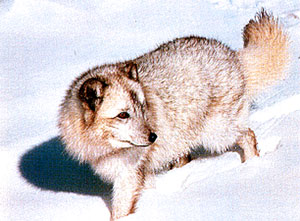
Fur is a major barrier to heat flow because it traps still air next to the skin. Because of the low specific heat capacity of air (0.24 cal/g/°C), it acts as a barrier to convective heat flow. As one might expect, the insulation value of fur increases with the thickness of the fur (and the air layer) and reaches the maximum for some of the larger terrestrial mammals such as the arctic fox.
However, among marine mammals, long fur does not occur, probably because of the increased hydrodynamic drag that it creates. As a result, marine mammals that rely on fur such as sea otters have a very dense, but short fur.
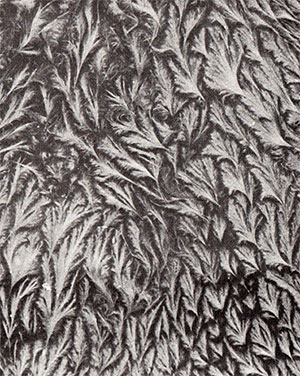
Although the average fur insulation of sea otters in water is good (ca. 0.3 m2 °C/W), it is not as good as that of the arctic fox in air (1.2 m2 °C/W). However, if an arctic fox were immersed in water, the insulation of its fur would not be as good as that of a sea otter. Hence the fur of sea otters is a compromise between good insulation and hydrodynamic properties.
Sea otter fur is the densest of any mammal and is composed of stout overhairs (guard hairs) and shorter, finer underhairs. Hair density ranges from 26,413 to 164,662 per cm2, with highest densities on the forearms (164,662), sides (157,264), rump (118,691), stomach (82,251), and back (77,526). The lowest densities are found on the chest (34,639), legs (30,761), and feet (26,413). Each hair bundle contains one guard hair and a variable number of underhairs (range = 12 underhairs per bundle on the legs to 108 underhairs per bundle in the mid-lateral areas).
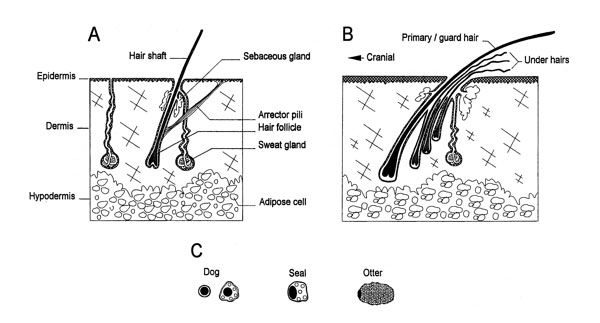
Hair follicle morphology of (A) a terrestrial mammal and (B) a sea otter. (C) Cross-sectional views of the arrangement of hairs in follicles for a dog, seal and sea otter.
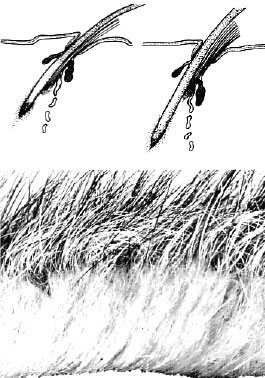
The length of the guard hairs (2.6-31.5 mm) and underhairs (1.5-26.3 mm) also varies with location on the body, with the shortest hairs on the legs and feet. The guard hairs are oval to round in cross section and have a diameter that ranges from 44-106 microns (mean diameter = 70 microns). Underhairs, which are irregularly shaped due to cuticular scales, are wavy and have a mean diameter of 10.3 microns. Sea otters appear to replace their hair throughout the year and do not have a seasonal molt.
Cross sectional view of sea otter fur and microscopic view of shaved hair follicles
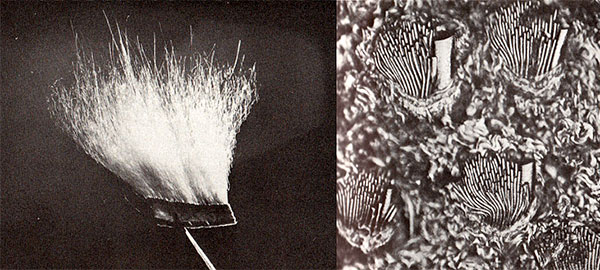
In the cold marine environment, the fur of sea otters is not sufficient to maintain a core body temperature Therefore, sea otters must augment heat production Their resting metabolic rate tends to be 2-3 times higher than that for a terrestrial mammal of equivalent size. The skin of the seal has relatively thin fur and a heavy layer of blubber, which provides most the insulation.
Sea otters may eat 25% of their body mass in food each day to support the high metabolic rate.

